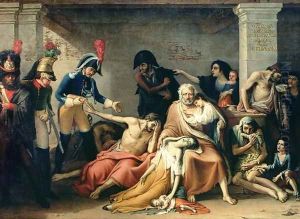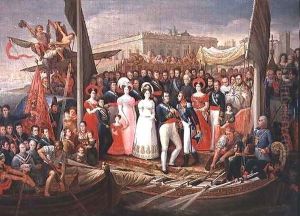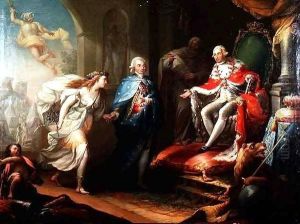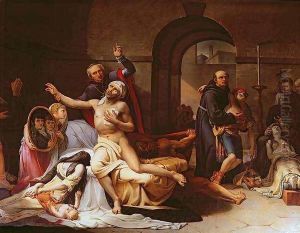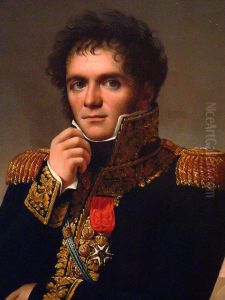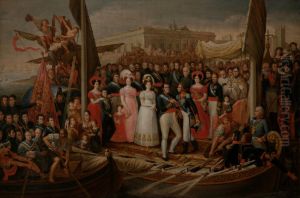Jose Aparicio Paintings
José Aparicio was a Spanish painter born in Alicante in 1770. He emerged as a prominent figure in the art world during the late 18th and early 19th centuries, a period that was marked by significant social and political changes in Europe, particularly in Spain. Aparicio's artistic journey began in his hometown, but his talent and ambition soon led him to further his studies and career in more prominent art centers of the time.
Aparicio's education in art took a significant step forward when he moved to Madrid, where he was able to study under the guidance of Mariano Salvador Maella, a respected painter of the Spanish royal court. His dedication and skill earned him a scholarship to study in Rome, which was then, as now, one of the world's most important cities for art and artists. It was in Rome that Aparicio was exposed to the works of the great masters of the Renaissance and Baroque periods, experiences that would have a lasting influence on his style and subjects.
Throughout his career, José Aparicio focused on religious themes and historical events, particularly those that resonated with the socio-political realities of his time. His work is characterized by a strong sense of realism, detailed depiction of human figures, and an ability to convey dramatic intensity and emotional depth. One of his most famous works is 'The Spanish Independence and the Priest Daoiz,' which reflects the patriotic fervor and the struggle for freedom that marked Spain's history in the early 19th century.
Aparicio's contributions to Spanish art were recognized with numerous honors and awards throughout his life. He was appointed as a court painter and became a member of the Royal Academy of Fine Arts of San Fernando, one of the most prestigious institutions in Spain dedicated to the promotion of the arts. Despite his success and recognition, Aparicio's works were, at times, subject to critique for their perceived lack of innovation in technique and style, a reflection of the rapidly changing tastes and artistic movements of the time.
José Aparicio's legacy is that of a painter who captured the spirit of his age, reflecting the struggles, aspirations, and devoutness of Spanish society during a tumultuous period in its history. He died in Madrid in 1838, leaving behind a body of work that continues to be studied and admired for its historical significance and artistic merit.
